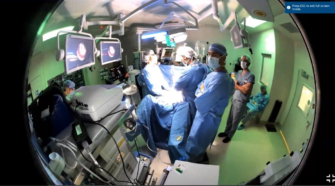By MotivHealth Insurance Company

Eating Disorder Awareness
The month of February promotes eating disorder awareness. Eating disorders continue to be a growing problem as social media and television spread manipulated images and unrealistic body ideals. There are three main eating disorders: Anorexia Nervosa, Bulimia Nervosa, and Binge Eating Disorder (BED). Anorexia Nervosa is characterized by an intense fear of gaining weight and a distorted perception of weight. Victims of Anorexia Nervosa consume well below their daily caloric needs. Bulimia Nervosa is characterized by episodes of binge eating followed by purging, such as forced vomiting or the use of laxatives. Binge Eating Disorder is characterized by frequent consumption of unusually large amounts of food and feeling an inability to stop eating. Though these are the three most common eating disorders, they are not the only ones. Click here to learn about more.
One in twenty people, or 30 million Americans, are affected by an eating disorder at some point in their lives. Less than 6% of these people are considered underweight. About 26% of people with eating disorders attempt suicide, and 10,200 deaths per year are directly related to eating disorders. Though eating disorders are primarily associated with females, they affect a great deal of males as well. If you feel a compulsive preoccupation with food or your body weight, you may suffer from an eating disorder. Sufferers of eating disorders are not alone and deserve help.
Diagnosis
How do you know if you have an eating disorder? Symptoms of eating disorders include excessive dieting and exercise, extreme overeating, purging, preoccupation with food, and preoccupation with body image. There are several free online screenings for people who believe they have an eating disorder. Of course, the best way to receive an accurate diagnosis is to visit a physician or psychiatrist. However, even if you don’t have a diagnosable eating disorder, you may still suffer from disordered eating. It’s easier to define “normal” eating than it is to define disordered eating, as disordered eating comes in so many forms. ‘Ai Pono Hawaii, an eating disorder recovery center, defines normal eating as:
“Going to the table hungry and eating until you are satisfied. It is being able to choose food you like and eat it and truly get enough of it—not just stopping because you think you should. Normal eating is being able to give some thought to your food selection, so you get nutritious food, but not being so wary and restrictive that you miss out on enjoyable food…Normal eating takes up some of your time and attention but keeps its place as only one important area of your life. In short, normal eating is flexible. It varies in response to your hunger, your schedule, your proximity to food, and your feelings.”
If the above description does not define the way you eat, you may want to evaluate your relationship with food. Due to incessant media images, most people in today’s world obsess about their appearance to some degree. Thus, there are frequent occurrences of disordered eating that do not qualify as official eating disorders.
Recovery
Intuitive eating is a great way for people who suffer from disordered eating to start their pathway to recovery. The diets of intuitive eaters are led by instinct, emotion, and rational thought. Dietitians Evelyn Tribole and Elyse Resch first coined the term “intuitive eating” in 1995. It is intended to promote attunement to your physical sensations to determine which biological and psychological needs must be met, and to remove psychological obstacles (such as food restrictions) that prevent you from eating happily. For example, intuitive eating involves allowing yourself to eat what you are craving right when you are craving it, even if it’s something that society labels as “bad,” such as processed sugar. Avoiding food restrictions in this way is believed to prevent binging. It is also believed that when people start eating exactly what they crave, they will be surprised by how often they start to crave fruits, vegetables, whole grains, and other things that society labels as “good.”
While obesity is an epidemic just as dangerous as eating disorders, there are many levels of weight gain that do not qualify as obese and shouldn’t be so feared. Healthy weight looks different for everyone. You don’t have to look like a runway model to be in great health. In fact, most people probably can’t achieve the media’s ideal weights through healthy means. Genetics play a huge role in weight, so talk to your doctor to find out what the healthiest weight is for you. You may be pleasantly surprised.
For those who suffer from diagnosable eating disorders, there are several resources for recovery. Talk to a parent or psychologist who can help you connect with group therapy sessions, inpatient programs, treatment centers, dietitians, and more. There is no shame in suffering from mental illness and there is certainly no shame in seeking help. Learn more about mental health resources here.
Sources:
“A Post for Dietitians: Why Intuitive Eating Should Not Be Used in Weight Loss Counseling”
Rachael Hartley Nutrition
“Eating Disorders”
The Mayo Clinic
“Eating Disorder Statistics”
ANAD
“Definition of Intuitive Eating”
Evelyn Tribole
“Disordered Eating…Beyond Anorexia and Bulimia”
CPYU
“Disordered Eating: A Segue to an Eating Disorder?”
‘Ai Pono Hawaii



No Comment